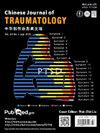Morphometric and anatomic characteristics of pronator quadratus muscle
IF 1.9
4区 医学
Q2 ORTHOPEDICS
引用次数: 0
Abstract
Purpose
In surgical procedures commonly employed for the management of scaphoid and distal radial fractures, the incision and dissection of the pronator quadratus muscle play a pivotal role. Nevertheless, comprehensive investigations into the anatomical intricacies of the pronator quadratus muscle have been relatively scarce within the clinical community. In light of this, our study endeavors to make a substantive contribution to the medical literature by conducting a meticulous examination of the morphology and morphometry of this muscle.
Methods
This study is a cross-sectional observational study conducted on 22 cadaveric upper extremities (44 sides) preserved between January 2005 and December 2018 at Istanbul University. The study included specimens with intact dissection areas and no prior surgical intervention. Observations focused on the morphometry of the pronator quadratus muscle and related anatomical structures. Statistical analysis was performed using SPSS v23.0, employing Student's t-test and paired t-test, with significance set at p < 0.05.
Results
Significant differences were found in the morphometric measurements of the pronator quadratus muscle between the right and left upper extremities, particularly in the vertical distance between the proximal and distal attachment points of the pronator quadratus to the radius (p = 0.008). Additionally, significant differences were observed between male and female samples for radius length (p < 0.001), ulna length (p < 0.001), pronator quadratus width (p < 0.001), and the vertical distance between pronator quadratus attachment points on both the radius (p = 0.001) and ulna (p = 0.001). Furthermore, significant correlations were identified between radius length and parameters such as the vertical distance between pronator quadratus attachment points on both the radius (p = 0.002) and pronator quadratus width (p = 0.030), and between ulna length and parameters including the vertical distances on the radius (p = 0.001) and ulna (p = 0.024).
Conclusion
In light of our comprehensive analysis, which encompasses not only the anatomical features of the pronator quadratus muscle but also its vascular supply and the organization of its neurovascular structures, we posit that our study holds significant implications for the field of orthopedic surgery. We anticipate that this research will furnish valuable insights that can inform and enhance orthopedic procedures.
发音肌的形态和解剖特征。
目的:在治疗肩胛骨和桡骨远端骨折的常用外科手术中,切开和剥离前庭大肌起着关键作用。然而,在临床上,对握前肌复杂解剖结构的全面研究相对较少。有鉴于此,我们的研究通过对这块肌肉的形态学和形态计量学进行细致研究,努力为医学文献做出实质性贡献:本研究是一项横断面观察性研究,对象是伊斯坦布尔大学 2005 年 1 月至 2018 年 12 月期间保存的 22 具尸体上肢(44 侧)。研究对象包括解剖区域完整且之前未进行过手术干预的标本。观察的重点是发音肌和相关解剖结构的形态测量。统计分析使用 SPSS v23.0,采用学生 t 检验和配对 t 检验,显著性以 p 为标准:左、右上肢之间的旋前肌形态测量结果存在显著差异,尤其是旋前肌与桡骨近端和远端附着点之间的垂直距离(p = 0.008)。此外,男性和女性样本在桡骨长度上也存在明显差异(p 结论:男性和女性样本在桡骨长度上存在明显差异:我们的综合分析不仅涵盖了旋前肌的解剖特征,还包括其血管供应及其神经血管结构的组织,因此我们认为我们的研究对矫形外科领域具有重要意义。我们预计,这项研究将为矫形外科手术提供有价值的见解。
本文章由计算机程序翻译,如有差异,请以英文原文为准。
求助全文
约1分钟内获得全文
求助全文
来源期刊

Chinese Journal of Traumatology
ORTHOPEDICS-
CiteScore
3.80
自引率
4.80%
发文量
1707
审稿时长
28 weeks
期刊介绍:
Chinese Journal of Traumatology (CJT, ISSN 1008-1275) was launched in 1998 and is a peer-reviewed English journal authorized by Chinese Association of Trauma, Chinese Medical Association. It is multidisciplinary and designed to provide the most current and relevant information for both the clinical and basic research in the field of traumatic medicine. CJT primarily publishes expert forums, original papers, case reports and so on. Topics cover trauma system and management, surgical procedures, acute care, rehabilitation, post-traumatic complications, translational medicine, traffic medicine and other related areas. The journal especially emphasizes clinical application, technique, surgical video, guideline, recommendations for more effective surgical approaches.
 求助内容:
求助内容: 应助结果提醒方式:
应助结果提醒方式:


